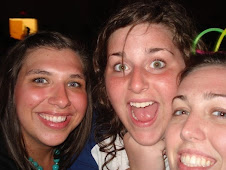For one hour, four times a week, Mr. Boehm teaches math to a class of sixth graders as Thurgood Marshall Elementary in Detroit. He has always wanted me to visit and watch him interact with "his kids". So I finally took him up on it...
All I can say is when the bell rang signaling the end of class and the students filed out of the classroom, I began to weep. I has just witnessed such a beautiful thing within the confines of that little crusty classroom. Students were engaged in learning; they couldn't get their hands up fast enough. Sixth grade students were discovering the rules of exponents from patterns, and they were into it!
I wish I could attribute what I saw happening in the classroom to magic, but I just don't believe in that stuff. Reflecting back to that day, I can recognize some teacher moves performed by Mr. Boehm that must have created a safe enough classroom for students to explore the realm of mathematics:
Nicknames: Mr. Boehm relates to his students enough to nickname them. There was a Beyonce, and Destiny's Child, a Muffin Man, a Sir Robert, and he even nicknamed me--Princess Leah! The nicknames added a sense of warmth to the room and a sense of community among students. Muffin Man is no longer sitting by some girl, but rather a girl worthy of the name Destiny's Child. The nicknames obviously add some fun to the mathematical mix as well.
The Star: At the beginning of the class, Mr. Boehm draws a star on the board. Throughout the period, whenever a student does something honorable, like allow another classmate to answer a question, Mr. Boehm will put the student's initial on one of the edges of the star. If the class does something well as a whole, he will put the letter "C" on an edge of the star. He is praising the kids in a simple way. Even though there is no gift such as candy or extra points involved, the students respond to Mr. Boehm's offer of encouragement.
Non-verbal: In Mr. Boehm's classroom, when someone is answering a question or offering something to the class, all the other students are supporting their fellow classmates by rotating one forearm around the other. If the students agree with the statement, they shake their hands in the air. If they don't agree, they move their arms like an ump does to signal a runner is safe. If they are confused by the statement, they wave only one hand. The movements build a community and provide space for students to respond to and support one another.
Respect: Before even answering a question or providing a general statement, the student must address the rest of the class with: "My esteemed colleagues...", and when I was their they addressed the class with: "My esteem colleagues and my esteemed visitor...". Students honor and respect one another.
Discovery: This is what drives Mr. Boehm's students. He does not simply provide students with the formulas and rules necessary to get math problems right. Students discover the rules by looking for patterns. While I was there students discovered that any time you have a base with an exponent and you multiply it by a a number with the same base but different exponents, you add the exponents. And students were so excited that they had discovered something of this magnitude.
The atmosphere of Mr. Boehm's classroom did not just happen on accident. He set up his classroom deliberately for an effective learning experience. I can't wait to try some of his ways in my future classroom.



